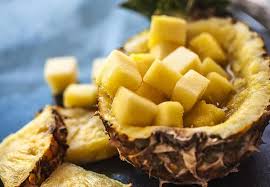Discovering the Best Breakfast Spots in Maui: A Culinary Adventure

Exploring the Best Breakfast Spots in Maui
Maui, known for its stunning beaches and lush landscapes, is also home to a vibrant food scene that includes delicious breakfast options. Whether you’re a local looking for a new spot to try or a visitor eager to experience the flavors of the island, Maui offers a variety of breakfast choices to suit every palate.
The Gazebo
Nestled in Napili Bay, The Gazebo is a popular breakfast spot known for its generous portions and scenic ocean views. Their famous macadamia nut pancakes and loco moco are must-try dishes that will leave you satisfied and ready for a day of exploring.
Kihei Caffe
Located in Kihei, Kihei Caffe is a casual eatery loved by locals and tourists alike. Their diverse menu features Hawaiian favorites like kalua pork omelets and banana macadamia nut pancakes. Be prepared to wait in line, as this hidden gem is always bustling with hungry diners.
The Plantation House Restaurant
If you’re looking for a more upscale breakfast experience, head to The Plantation House Restaurant in Kapalua. This elegant restaurant offers sweeping views of the golf course and ocean, making it the perfect setting for a leisurely morning meal. Indulge in their decadent eggs benedict or try their signature pineapple upside-down pancakes.
Aloha Mixed Plate
For those craving traditional Hawaiian breakfast fare, Aloha Mixed Plate in Lahaina is the place to go. Their loco moco, spam musubi, and poi pancakes provide an authentic taste of local cuisine that will transport you straight to the heart of Hawaii.
Whether you prefer classic breakfast dishes or want to sample unique Hawaiian flavors, Maui’s breakfast scene has something for everyone. So grab a cup of Kona coffee and start your day off right at one of these top breakfast spots on the island!
Top 6 Breakfast Tips for a Delicious Start in Maui
- Try local favorites like Loco Moco or Spam Musubi for a taste of Hawaiian cuisine.
- Opt for fresh fruits like pineapple, papaya, and mango for a refreshing start to your day.
- Explore cafes and bakeries for delicious pastries such as malasadas or coconut scones.
- Don’t miss out on traditional Hawaiian breakfast dishes like Poi or Haupia.
- Enjoy acai bowls topped with granola, honey, and tropical fruits for a healthy and satisfying breakfast option.
- Visit farmer’s markets to sample locally grown produce and unique breakfast items.
Try local favorites like Loco Moco or Spam Musubi for a taste of Hawaiian cuisine.
When exploring the best breakfast spots in Maui, be sure to indulge in local favorites like Loco Moco or Spam Musubi for an authentic taste of Hawaiian cuisine. These iconic dishes offer a delicious blend of flavors that showcase the unique culinary heritage of the islands. Whether you’re a seasoned foodie or simply looking to immerse yourself in the local culture, trying these traditional breakfast options is a must-do experience during your visit to Maui.
Opt for fresh fruits like pineapple, papaya, and mango for a refreshing start to your day.
For a refreshing start to your day in Maui, consider opting for fresh fruits like pineapple, papaya, and mango. These tropical delights not only provide a burst of flavor but also offer a healthy and invigorating way to kick off your morning. Enjoying these locally grown fruits not only supports the island’s agriculture but also allows you to savor the vibrant tastes of Maui’s bountiful land. Incorporating these fresh fruits into your breakfast routine can add a touch of tropical paradise to your day and leave you feeling energized and ready to explore all that Maui has to offer.
Explore cafes and bakeries for delicious pastries such as malasadas or coconut scones.
When seeking the best breakfast experience in Maui, be sure to explore the charming cafes and bakeries scattered across the island. Indulge in delectable pastries like malasadas, a Portuguese fried dough treat dusted with sugar, or coconut scones that offer a delightful tropical twist. These sweet and savory delights are perfect for starting your day on a delicious note while immersing yourself in the unique flavors of Maui’s culinary scene.
Don’t miss out on traditional Hawaiian breakfast dishes like Poi or Haupia.
When exploring the best breakfast spots in Maui, make sure not to overlook traditional Hawaiian breakfast dishes like Poi or Haupia. These authentic delicacies offer a taste of the island’s rich culinary heritage and are a must-try for those looking to immerse themselves in Hawaiian culture. Poi, a staple made from taro root, has a unique texture and flavor that pairs well with other dishes, while Haupia, a coconut milk-based dessert, adds a touch of sweetness to your morning meal. Embrace the flavors of Hawaii by savoring these traditional dishes alongside your favorite breakfast fare for a truly unforgettable dining experience on the island.
Enjoy acai bowls topped with granola, honey, and tropical fruits for a healthy and satisfying breakfast option.
Indulge in the delicious and nutritious acai bowls offered at various breakfast spots in Maui. Topped with crunchy granola, sweet honey, and an assortment of tropical fruits, these vibrant bowls are a perfect choice for a healthy and satisfying morning meal. The refreshing blend of flavors and textures will energize you for a day of exploring the beauty of Maui while providing a nutritious start to your day.
Visit farmer’s markets to sample locally grown produce and unique breakfast items.
When exploring the best breakfast spots in Maui, be sure to visit farmer’s markets to sample locally grown produce and unique breakfast items. Maui’s farmer’s markets offer a vibrant array of fresh fruits, vegetables, and artisanal products that showcase the island’s rich agricultural heritage. From tropical fruits like papaya and pineapple to homemade jams and baked goods, these markets provide a delicious opportunity to taste the flavors of Maui while supporting local farmers and producers. Don’t miss out on the chance to experience the true essence of Hawaiian cuisine by incorporating fresh, seasonal ingredients into your morning meal at these bustling marketplaces.

